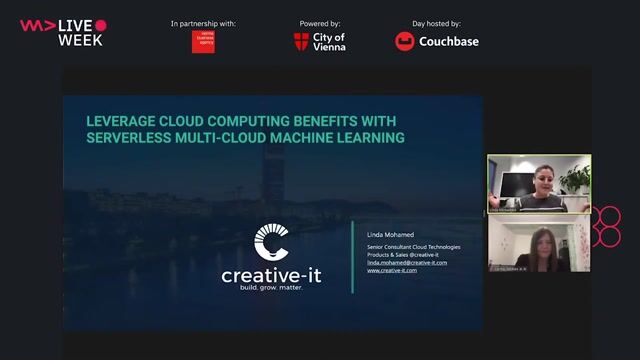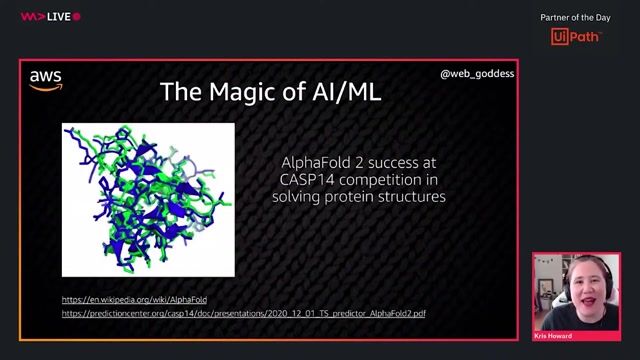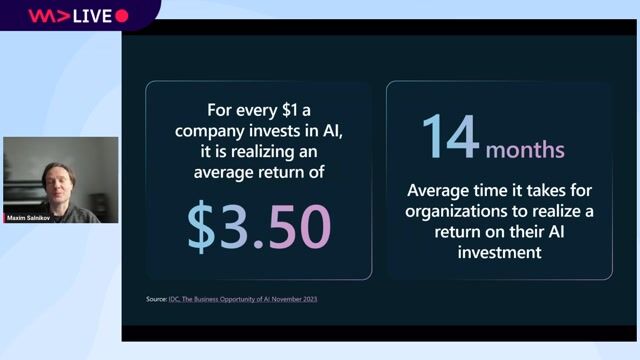Sohan Maheshwar
Optimizing your AI/ML workloads for sustainability
#1about 3 minutes
Understanding the carbon footprint of large AI models
The increasing size and complexity of models like GPT-4 result in a significant carbon footprint, with training a single model consuming more energy than a lifetime of car usage.
#2about 3 minutes
Reducing emissions with the cloud's shared responsibility model
Migrating workloads to a cloud provider like AWS can reduce energy usage by up to 80%, operating under a shared responsibility model where AWS manages the cloud's sustainability.
#3about 5 minutes
Optimizing the ML lifecycle starting with problem framing
Begin the ML lifecycle sustainably by using purpose-built hardware, pre-trained models from marketplaces, and managed AI services to avoid redundant computation.
#4about 6 minutes
Implementing sustainable data processing and storage strategies
Reduce your workload's environmental impact by using tiered storage with lifecycle policies, efficient compression algorithms, and optimized file formats like Parquet.
#5about 2 minutes
Selecting purpose-built hardware for ML workloads
Improve energy efficiency by selecting specialized silicon for different ML phases, such as AWS Trainium for training, Inferentia for inference, and Graviton processors for general workloads.
#6about 3 minutes
Adopting sustainable practices for model development
During model development, define acceptable performance criteria to prevent over-training, choose energy-efficient algorithms, and use pre-trained models to reduce computational waste.
#7about 5 minutes
Optimizing the high-cost model deployment and inference phase
Since deployment accounts for 90% of ML costs, focus on right-sizing inference environments by smoothing traffic peaks with queues and negotiating flexible service level agreements.
#8about 4 minutes
Applying the AWS Well-Architected Framework for sustainability
Use the sustainability pillar of the AWS Well-Architected Framework to get recommendations, such as choosing regions with higher renewable energy usage to lower your carbon footprint.
#9about 2 minutes
Measuring and tracking your workload's carbon footprint
Actively monitor your environmental impact using tools like the AWS Customer Carbon Footprint tool and normalize metrics to track efficiency gains as your workload scales.
#10about 4 minutes
Applying AI and ML to solve global sustainability challenges
Leverage AI/ML for positive environmental impact by using open datasets like the Amazon Sustainability Data Initiative to address challenges in conservation, climate risk, and the circular economy.
#11about 6 minutes
Real-world case studies of ML in environmental conservation
Explore how organizations use ML on satellite imagery to monitor oceans for oil spills and deploy ML at the edge with rugged devices to protect forests and endangered species.
#12about 1 minute
A call to action for building sustainable technology
Take action by starting sustainability conversations, exploring open data initiatives like ASDI, and applying the AWS Well-Architected Framework to your own projects.
Related jobs
Jobs that call for the skills explored in this talk.
Featured Partners
Related Videos
 35:16
35:16How AI Models Get Smarter
Ankit Patel
 34:21
34:21DevOps for AI: running LLMs in production with Kubernetes and KubeFlow
Aarno Aukia
 47:19
47:19The state of MLOps - machine learning in production at enterprise scale
Bas Geerdink
 59:39
59:39Building Products in the era of GenAI
Julian Joseph
 39:58
39:58Leverage Cloud Computing Benefits with Serverless Multi-Cloud ML
Linda Mohamed
 39:02
39:02Serverless deployment of (large) NLP models
Marek Suppa
 49:45
49:45Machine Learning for Software Developers (and Knitters)
Kris Howard
 41:45
41:45From Traction to Production: Maturing your LLMOps step by step
Maxim Salnikov
From learning to earning
Jobs that call for the skills explored in this talk.
Machine Learning (IA/ML) + DevOps (MLOps)
Alten
Municipality of Madrid, Spain
Remote
Java
DevOps
Python
Kubernetes
+3
Delivery Consultant - Machine Learning (GenAI), ProServe EMEA
Amazon.com, Inc
Senior
Spark
Hadoop
PyTorch
Machine Learning
Amazon Web Services (AWS)
Senior Delivery Consultant- GenAI/ML, AWS, Professional Services
AWS EMEA SARL (Germany Branch)
München, Germany
Senior
DevOps
Python
Terraform
Machine Learning
Amazon Web Services (AWS)
+1
Senior Delivery Consultant- GenAI/ML, AWS, Professional Services
AWS EMEA SARL (Germany Branch)
Berlin, Germany
Senior
DevOps
Python
Terraform
Machine Learning
Amazon Web Services (AWS)
+1
Senior GenAI/ML Specialist Solutions Architect, AWS Global Sales (AGS)
AWS EMEA SARL (UK Branch)
Charing Cross, United Kingdom
Remote
Senior
Java
REST
DevOps
Python
+5
Sr Delivery Consultant (AI/ML), Professional Services
AWS EMEA SARL (UK Branch)
Manchester, United Kingdom
Senior
Python
Terraform
Machine Learning
Amazon Web Services (AWS)
Natural Language Processing
+1
Machine Learning (ML) Engineer Maitrisant - Python / Github Action
ASFOTEC
Canton de Lille-6, France
Intermediate
NoSQL
Kafka
DevOps
Python
Pandas
+11
Delivery Consultant - AI/ML, Professional Services, Professional Services
AWS EMEA SARL (UK Branch)
Manchester, United Kingdom
Intermediate
API
Java
DevOps
Python
Machine Learning
+1


